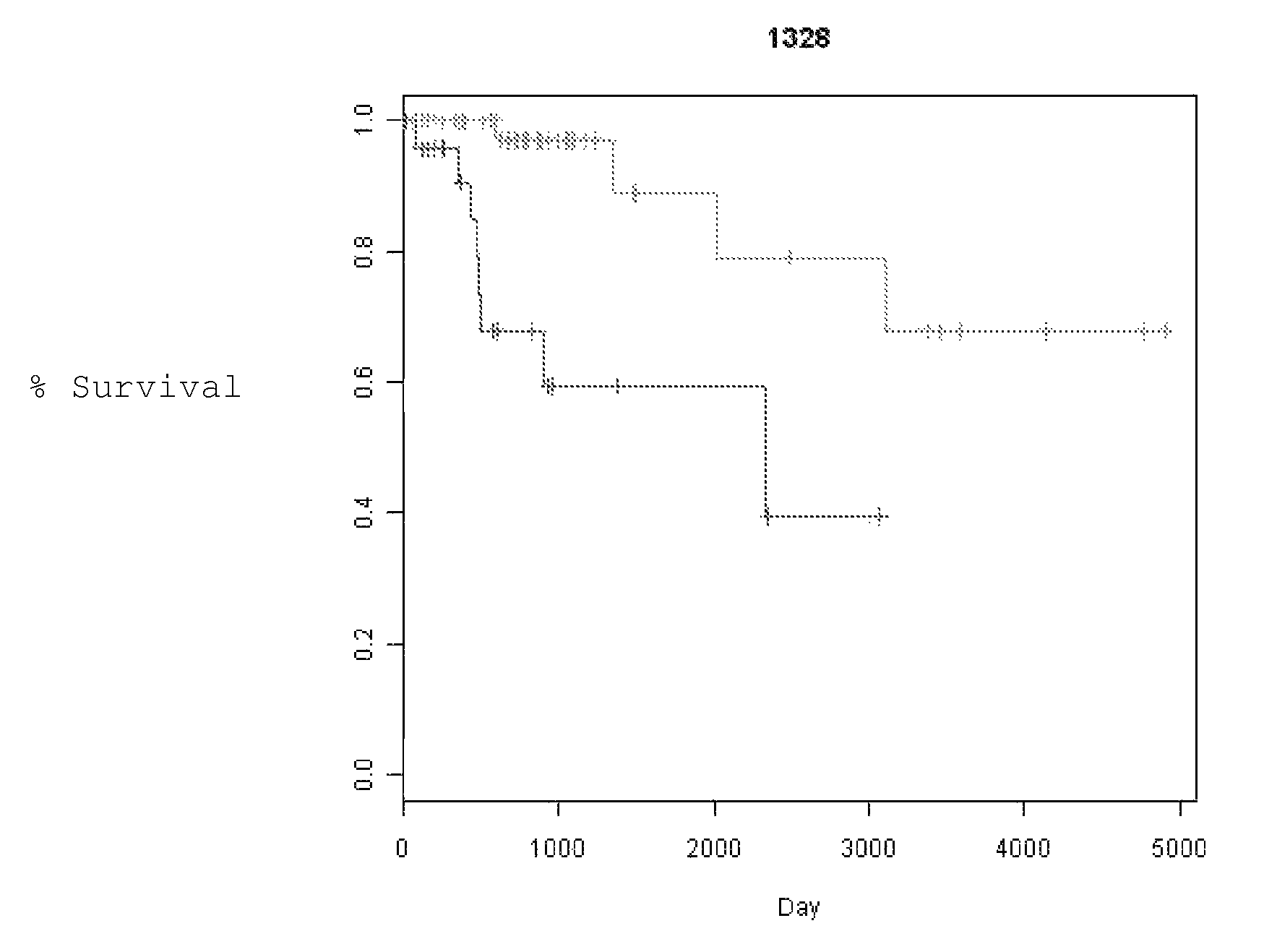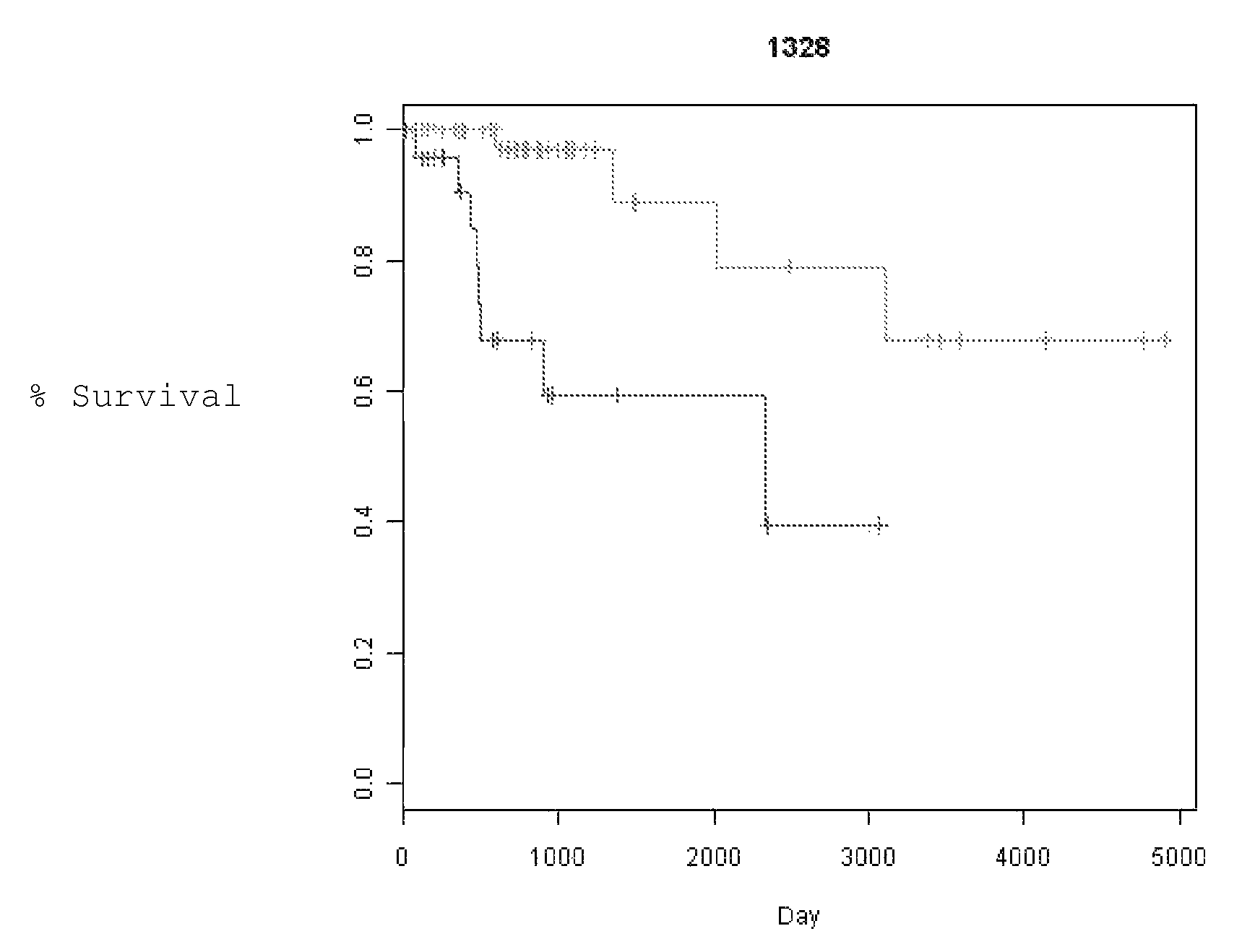Diagnostic methods for determining prognosis of non-small cell lung cancer
a non-small cell lung cancer and prognosis technology, applied in the field of in vitro diagnostic assays of lung cancer patients, can solve the problems of significant toxicities in patients who are treated, unacceptably high rate of patients developing, and the inability to predict which patients will recur after surgery, etc., to achieve the effect of reducing the overall survival time, increasing the risk of poor disease outcome, and poor results
- Summary
- Abstract
- Description
- Claims
- Application Information
AI Technical Summary
Benefits of technology
Problems solved by technology
Method used
Image
Examples
example
[0069]Experimental Methods:
[0070]Specimens. A total of 178 NSCLC clinically annotated samples were profiled for gene copy number alterations using high-density SNP genotyping microarrays (AFFYMETRIX® 100K array set). All samples were carefully dissected to maximize tumor / normal tissue ratio and verify histopathological type and stage. Only samples from patients with stage I and II disease were analyzed. All of these were from patients treated with surgical resection without any neoadjuvant chemotherapy. Clinical information collected for each patient included race, age, date of birth, sex, clinical stage, pathological stage, location, surgical procedure (SP) date, histology, differentiation, diagnosis date, node positivity, smoking status, chemotherapy status, radiation status, recurrence status, recurrence date, recurrence location, time to recurrence, date of last follow up, status at the last follow up, alive / dead, overall survival and cause of death. Time to Recurrence (TTR) and...
PUM
| Property | Measurement | Unit |
|---|---|---|
| temperatures | aaaaa | aaaaa |
| temperatures | aaaaa | aaaaa |
| temperatures | aaaaa | aaaaa |
Abstract
Description
Claims
Application Information
 Login to View More
Login to View More - R&D
- Intellectual Property
- Life Sciences
- Materials
- Tech Scout
- Unparalleled Data Quality
- Higher Quality Content
- 60% Fewer Hallucinations
Browse by: Latest US Patents, China's latest patents, Technical Efficacy Thesaurus, Application Domain, Technology Topic, Popular Technical Reports.
© 2025 PatSnap. All rights reserved.Legal|Privacy policy|Modern Slavery Act Transparency Statement|Sitemap|About US| Contact US: help@patsnap.com


